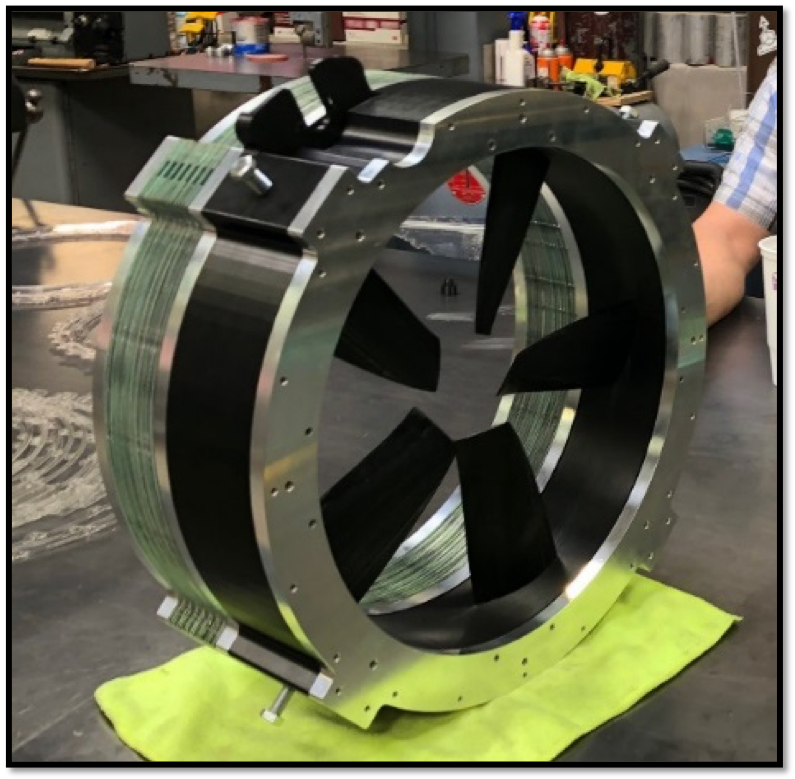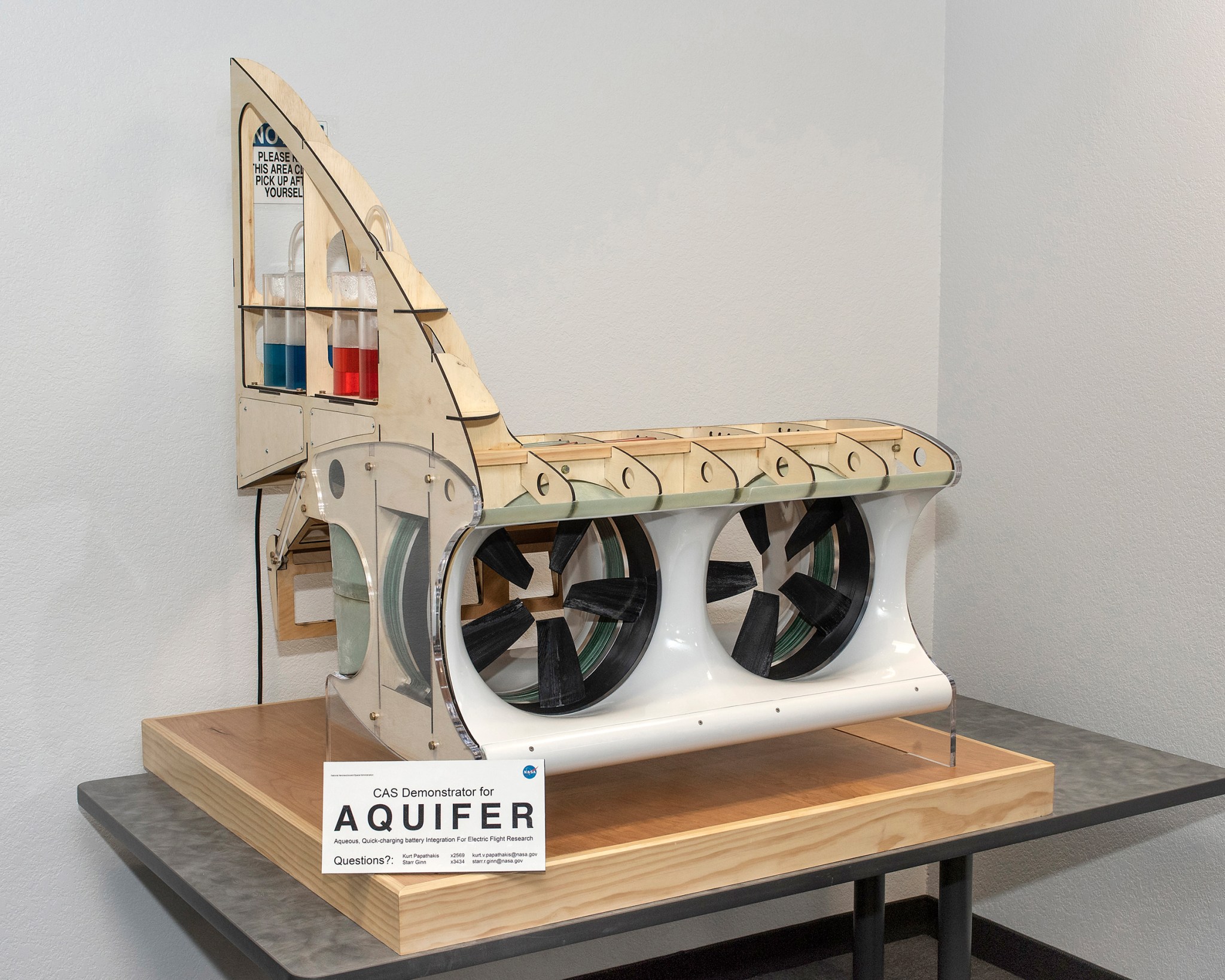NASA recently announced the 2018 winners of the agency’s Convergent Aeronautics Solutions (CAS) program, which includes funding for an early-stage rechargeable liquid battery technology. The Aqueous, QUick-charging battery Integration For Electric flight Research (AQUIFER) project will use the award funds to further investigate a liquid battery technology with the potential to generate a propulsion source more energy-dense, cleaner, and safer than any options currently available to electric aircraft.
The goal of the CAS program’s AQUIFER project, is to validate the technical feasibility of integrating nano-electrofuel (NEF) flow batteries with rim-driven motors (RDM) as a system for generating and storing a liquid propulsion source for electric aircraft. Where lithium-ion batteries lack, this approach would create a higher energy dense, non-explosive energy source that can be refilled quickly between flights.
NASA’s Armstrong Flight Research Center will lead the AQUIFER effort with the support of both internal partners, including Glenn Research Center and Langley Research Center, and external partners including Boeing, ESAero, Influit Energy, and Electricore.
As it exists today, there isn’t enough lithium on Earth to truly utilize the resource to its full potential in the transportation industry. By creating alternative methods for fuel, such as this one, the future of electric mobility can grow exponentially.
“This concept actually came from the notion of “heat transfer,” where water is used to transfer heat from one area to another,” explains Kurt Papathakis, principal investigator for AQUIFER. “From this, it was realized that not only could you use water and nano Iron particles to transfer heat, but if you actually infused a positively and negatively charged material, you could carry an electric charge in the liquid as well.”
The funding by NASA’s CAS Project allows teams within NASA to propose ideas for technologies that can help the industry overcome key barriers associated with large-scale aeronautics problems. For the AQUIFER project, CAS funding will provide the AQUIFER team with critical resources necessary to establish several early-stage concepts and validate the feasibility of this high-potential solution within the aviation industry.
As aviation capabilities continue to advance and grow, so do the associated risks and challenges. By finding solutions to challenges such as battery safety concerns, range limitations of electric aircraft, or how to reduce the noise disturbances from newer aviation technology, NASA can continue to propel the aviation industry further than ever before.




























